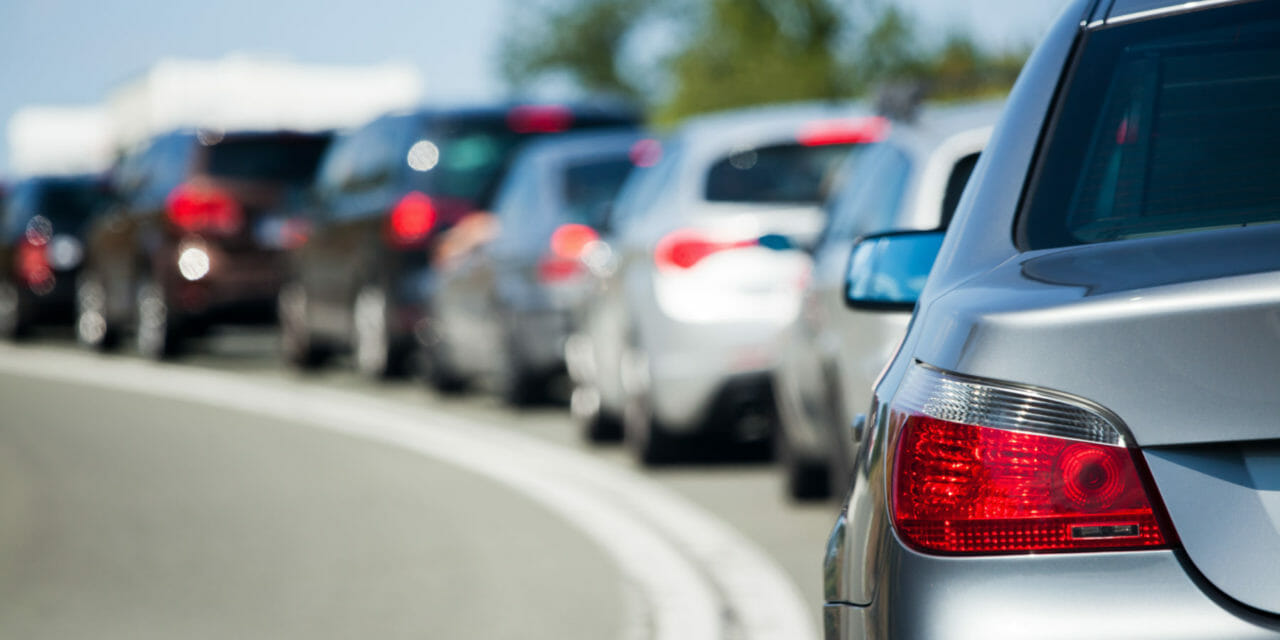Can You Guess Which State Ranks the Worst in Which to Drive?
With traffic congestion costing the average U.S. driver around 50 hours of their time each year, leading to hundreds of dollars in productivity losses, the personal-finance website WalletHub today released its report on 2024’s Best & Worst States in which to Drive.
To determine the most driver-friendly states in the U.S., WalletHub compared the 50 states across 31 key metrics. The data set ranges from average gas prices to rush-hour traffic congestion to road quality.
Driving in California (1=Best; 25=Avg.):
Overall rank for California: 46th
- 45th – Share of Rush-Hour Traffic Congestion
- 16th – Traffic Fatality Rate
- 44th – Car Theft Rate
- 50th – Avg. Gas Prices
- 23rd – Auto-Maintenance Costs
- 40th – Road Quality
“When people think about the costs associated with owning a vehicle, things like regular maintenance, insurance and gas typically come to mind. What many people don’t realize is that traffic congestion can also be extremely costly because of the amount of time it wastes, which is why the best states for driving tend to be more sparsely populated. Factors like safety and the quality of roads are key, too.”
—
“Iowa is the best state to drive in partly because the roads are mostly clear of congestion, even during rush hour. This is one area where being a rural state comes in handy. Due to these good road conditions, Iowa drivers tend to have short commutes, at less than 20 minutes on average, and they benefit from some of the lowest gas and car insurance prices in the nation.”
– Cassandra Happe, WalletHub Analyst
Best States in Which to Drive
Americans lose hundreds of dollars per year wasting time in traffic, and hitting the road can be especially taxing in certain states or actually quite efficient in a select few areas. Iowa is the best state to drive in this year, according to a new report by the personal-finance website WalletHub, and it’s followed by Georgia, Kansas, Oklahoma and Alabama. The report analyzed 31 key indicators across four dimensions: cost of ownership and maintenance, traffic and infrastructure, safety, and access to vehicles and maintenance.
“Iowa is the best state to drive in partly because the roads are mostly clear of congestion, even during rush hour. This is one area where being a rural state comes in handy,” said Cassandra Happe, WalletHub analyst. “Due to these good road conditions, Iowa drivers tend to have short commutes, at less than 20 minutes on average, and they benefit from some of the lowest gas and car insurance prices in the nation.”
Best and Worst States for Drivers
Best States
1. Iowa
2. Georgia
3. Kansas
4. Oklahoma
5. Alabama
6. North Carolina
7. Ohio
8. Tennessee
9. Texas
10. North Dakota
Worst States
41. Montana
42. Vermont
43. Rhode Island
44. Nevada
45. Massachusetts
46. California
47. West Virginia
48. Delaware
49. Washington
50. Hawaii

Cassandra Happe
Each of the best states for drivers has its own strengths. For example, Georgia has the second-most gas stations and the ninth-most alternative fuel stations per capita, Cassandra Happe, WalletHub analyst said. Kansas has lowered its traffic fatality rate significantly, and residents speed less often than people in many other states. Oklahoma has strict punishments for DUI and good-quality roads, and Alabama has low precipitation and lots of gas stations relative to its population.
“When people think about the costs associated with owning a vehicle, things like regular maintenance, insurance and gas typically come to mind. What many people don’t realize is that traffic congestion can also be extremely costly because of the amount of time it wastes, which is why the best states for driving tend to be sparsely populated,” said Happe. “Factors like safety and the quality of roads are key, too.”
You don’t need to move to a driver-friendly state to save, however. There are a few things that you can do to have a smoother and less expensive driving experience no matter where you are.
You don’t need to move to a driver-friendly state to save, however. There are a few things that you can do to have a smoother and less expensive driving experience no matter where you are.
Tips for a Better Driving Experience
- Stay focused and avoid distractions: Keep your attention on the road by avoiding distractions like talking on the phone, eating or adjusting your music while driving. Staying focused enhances your awareness and reaction time. If you’re visiting somewhere for sightseeing, consider taking a rideshare so you can enjoy the view without being distracted.
- Follow traffic rules: Follow the posted speed limit and obey traffic rules to ensure your safety and the safety of others on the road. Respecting speed limits doesn’t just reduce the risk of accidents – it also improves fuel efficiency.
- Practice defensive driving: Anticipate potential hazards by maintaining a safe following distance from the car in front of you, staying aware of your surroundings, and being prepared for sudden changes in traffic. Defensive driving helps you respond to unexpected situations and avoid accidents.
- Maintain your vehicle: Regularly check and maintain your vehicle, including tire pressure, brakes, lights, and fluids. A well-maintained vehicle not only operates more efficiently but also reduces the likelihood of breakdowns.
- Adjust your commute times: Leaving just a little bit earlier or later to avoid rush-hour traffic can save you a lot of money and time, and help you arrive at your destination in a better mood.
- Don’t wait until the last minute to refuel: Get gas before your vehicle is close to empty – that way, you won’t have to stress about going out of your way to find a station in time. Before refueling, check gas prices at different stations in your area. Utilize apps or websites to find the most cost-effective options, helping you save on fuel costs over time.
- Practice fuel-efficient driving habits: Adopt fuel-efficient driving habits such as smooth acceleration and deceleration, maintaining a steady speed, and avoiding unnecessary idling. This not only conserves fuel but also saves you money at the pump.
Full report: https://wallethub.com/edu/best-worst-states-to-drive-in/43012/
Image Sources
- Cassandra Happe: WalletHub
- Traffic: Shutterstock







